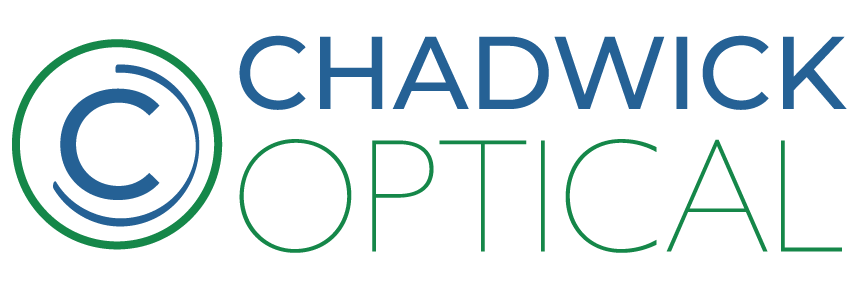
Other Treatment Options for Hemianopia
So, what’s currently on the market and touted as a solution for patients with hemianopia (AKA hemianopsia)? The staff at Chadwick Optical receives many hemianopia inquiries each day, and we are confident that we can help you do right by your hemianopia patient. We stand by the Peli Lens as the best solution by far for treating hemianopia, but we wanted to use this page as a refresher about other ‘solutions’ out there.
When it comes to hemianopia, it’s important to assess and prioritize the patient’s daily living goals to ensure their treatment properly aligns with those goals. The most common concerns from these patients typically involve reading, mobility, and driving. With this in mind, let’s get down to prisms.
Prisms and Hemianopia
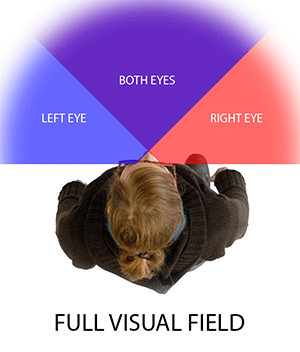
Prisms are typically used to correct for diplopia, but not so when it comes to hemianopia because the goal with hemianopia is not to correct diplopia, but to maximize functional visual field.
When used for hemianopia, prisms are used to relocate, reposition, and expand the patient’s visual field. The different field expansion strategies can be split into four basic groups, and each of them work in completely different ways. To show how they work, it’s important to consider the wearer’s eye movements. For each of the lens designs, we show two separate overhead visual fields. The first is the patient’s field at primary gaze. The second is the patient’s field at 10 degrees gaze left.
Peripheral Prisms
These prisms sit in the patient’s peripheral visual field and offer information from the blind visual field.


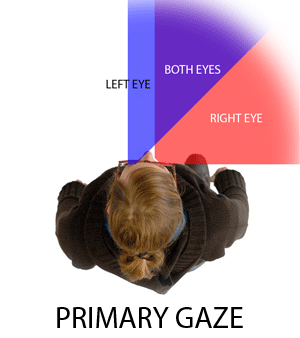
Spotting Prisms
These prisms sit in the patient’s blind field and offer an expanded field when the patient looks into them.

Yoked Prisms
These prisms cover the entire visual field, and go in the same direction, typically the direction of the field loss. This shifts the visual field slightly towards the blind side.
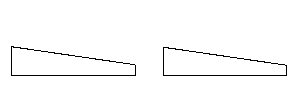

Tradeoffs - Apical Scotomas, Disturbing Double Vision, and Confusing Double Vision
Here’s the thing. Not all prisms are the same, nor are they all used for the same thing. AND not all of them improve a patient’s quality of life, which is a top priority here. It needs to be said that there is no known way to optically expand your patient’s visual field without a trade-off. Every optical intervention is going to be gaining field by taking something else away. It may take away contrast, field, or both. The goal is to minimize the effect of the trade-offs and maximize the benefits. So, what trade-offs can you expect from these types of prisms?
Apical Scotoma
The first trade-off to consider is an apical scotoma. At the apex of a prism, there is a field loss that is roughly the same size as the amount gained by the prism. This effect is especially apparent on the yoked spotting prisms (aka bilateral sector prisms) where the patient loses vision straight ahead and gains a little bit out to the side. Many practitioners are reluctant to prescribe this prism configuration because of the potential dangers of having a blind spot directly in front of you.
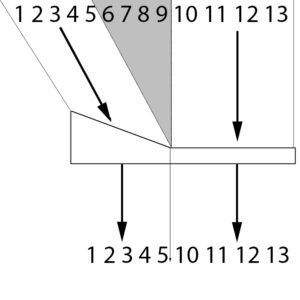
Disturbing Double Vision
Double vision in central vision is disturbing and confusing. This is apparent when gazing into the spotting prism (aka unilateral sector prism and marketed under many other names). The field expansion is disturbing because it gives the patient double vision in their central vision. And if it doesn’t give the patient disturbing double vision, then it isn’t giving them field expansion. In some literature and advertising, this disturbing double vision is theorized to be a benefit—an annoying cue for the patient to turn their head and acknowledge their blind field. There is no known scientific proof of this claim.
Disturbing Double Vision vs. Confusing Double Vision
Central Double Vision is disturbing. Peripheral Double Vision is just confusing.
The body actively revolts against the disturbing double vision of a spotting prism. When a patient looks into a spotting prism, their eye involuntarily pushes back towards the apex of the prism in an effort to fuse the disturbing image. There is no amount of training that will override this natural physiological reaction to a spotting prism.
Confusing double vision does not trigger any sort of notable physiological reaction. Without the body actively fighting against it, patients can learn to appreciate the field expansion created by peripheral prisms.
Choosing a Solution
Before deciding on a solution, start with your patient’s goals. If their goals include having better awareness of their blind side for mobility, then fitting the patient with temporary peripheral prisms is a great place to start. There is no other option that gives a comparable benefit. Supplementing the peripheral fitting with vision training/therapy sessions has been shown to dramatically improve the patient’s awareness of the expanded visual field. You can download the fitting protocol here.
If their goals include improving reading, vision therapy offers their best chance at success.
Many patients hope to drive with hemianopia. Rules on driving vary from state to state, province to province, and country to country. If the state allows patients to drive with a visual field of 120 degrees or less, permanent peripheral prisms can probably help the patient meet the visual field requirement. Give us a call to discuss your specific case so we can help you determine the best course of action.
